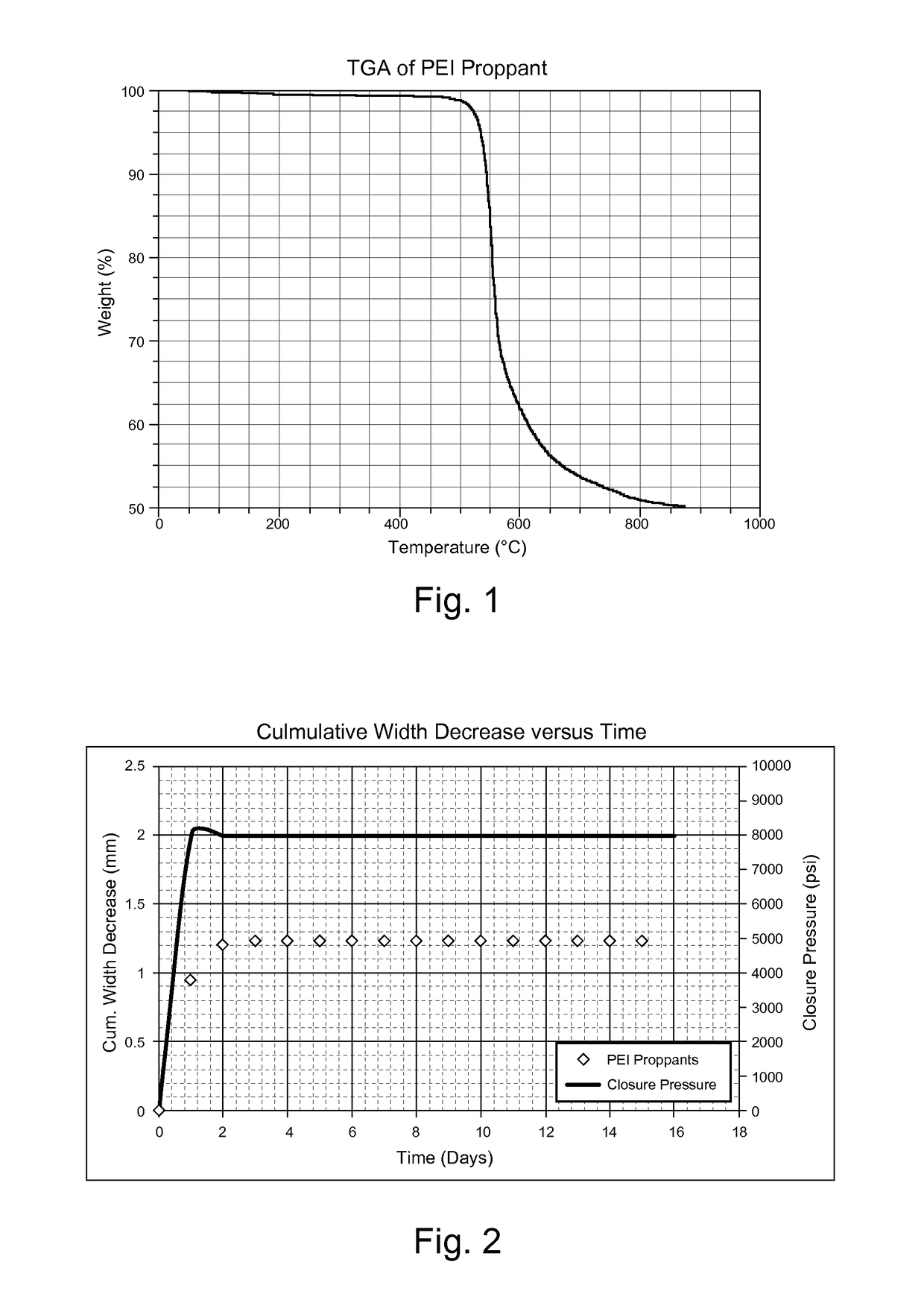Proppants for subterranean formations and methods of using the same
a technology of subterranean formations and proppants, which is applied in the direction of well accessories, drilling compositions, chemistry apparatus and processes, etc., can solve the problems of less crush resistance or fines produced under increased pressure, and achieve the effects of enhancing the stimulation of subterranean formations, increasing conductivity, and increasing the productive life of wells
- Summary
- Abstract
- Description
- Claims
- Application Information
AI Technical Summary
Benefits of technology
Problems solved by technology
Method used
Image
Examples
example 1
Sieve Analysis
[0069]Particle size distribution determined the proppant packing in the fracture and, therefore, impacted the conductivity of the packing. The size distribution was determined by sieve analysis. The sieve analyses were done in accordance with procedure as described in ISO 13503-2 standard. The procedure used a stack of sieves with a pan at the bottom of the stack. The sieve sizes in the stack were selected as described in the ISO 13503-2 standard. A sample of 100 grams of split sample was placed on the topmost sieve in the stack. The stack was then placed in a sieve shaker for 10 minutes. Subsequently the amount of proppant retained on each sieve was noted and reported as percentage retained. During the analysis, 90 wt % of the PEI proppant proppants were passed through sieve 8 (2380 micron) and were retained on sieve 12 (1680 micron).
example 2
Acid Solubility
[0070]An acid solubility test determined the stability of the polymeric proppant in an acidic medium. The test was done in accordance with procedure as mentioned in ISO 13503-2, wherein a mixture of hydrochloric acid and hydrofluoric acid in a 12:3 ratio at 150° F. and 160° F. was used in 30 minute durations. The test results showed the solubility of polymeric proppants was less than 1 wt %.
example 3
Crush Resistance
[0071]Proppant breakage and fine generation causes decreased pack conductivity due to the generated fine flowing with the recovered hydrocarbon and consequently plugging the flow channels. Crush resistance determined the maximum crushing force that the proppant may experience once the fracture is closed and the well is put in production. The crush resistance test was done in accordance with the procedure as mentioned in the ISO 13503-2 standard. The procedure involved taking a known weight of a sample in the test cell and applying a load at constant rate. The load was maintained on the proppant for a defined time. This was followed by sieving the proppants and determining the amount of fines generated. The test was carried at different pressure, including 3000 psi, 10000 psi, and 15000 psi. The polymeric proppants showed less than 0.5 wt % fines generated as a result of the applied pressure, as shown in Table 1.
[0072]
TABLE 1Crush Resistant Test ResultsSample Ultimate...
PUM
| Property | Measurement | Unit |
|---|---|---|
| pore size | aaaaa | aaaaa |
| aspect ratio | aaaaa | aaaaa |
| temperature | aaaaa | aaaaa |
Abstract
Description
Claims
Application Information
 Login to View More
Login to View More - R&D
- Intellectual Property
- Life Sciences
- Materials
- Tech Scout
- Unparalleled Data Quality
- Higher Quality Content
- 60% Fewer Hallucinations
Browse by: Latest US Patents, China's latest patents, Technical Efficacy Thesaurus, Application Domain, Technology Topic, Popular Technical Reports.
© 2025 PatSnap. All rights reserved.Legal|Privacy policy|Modern Slavery Act Transparency Statement|Sitemap|About US| Contact US: help@patsnap.com


